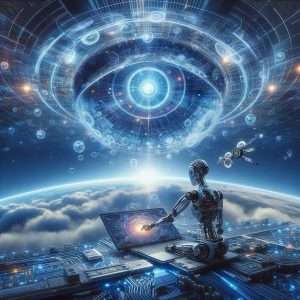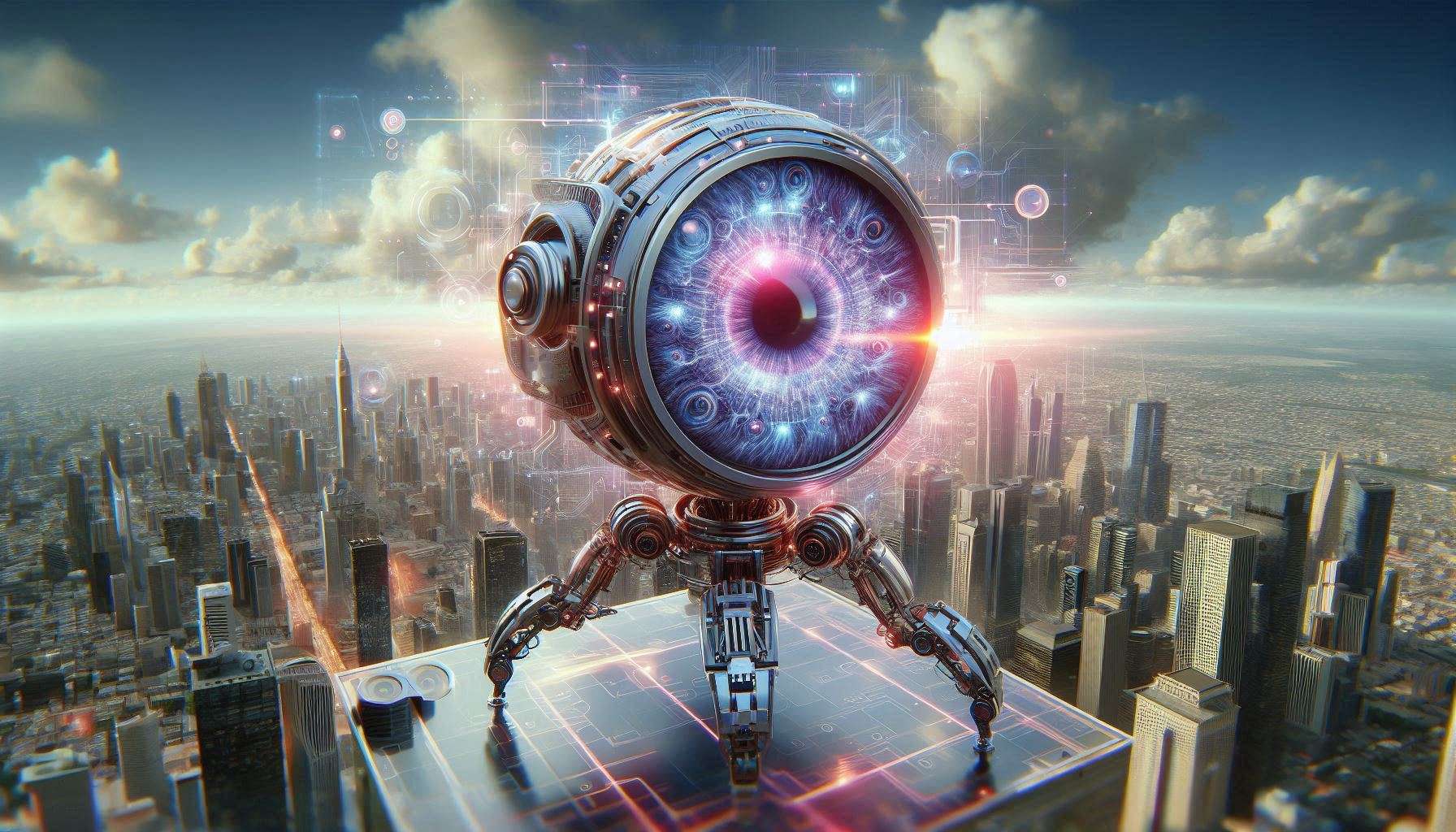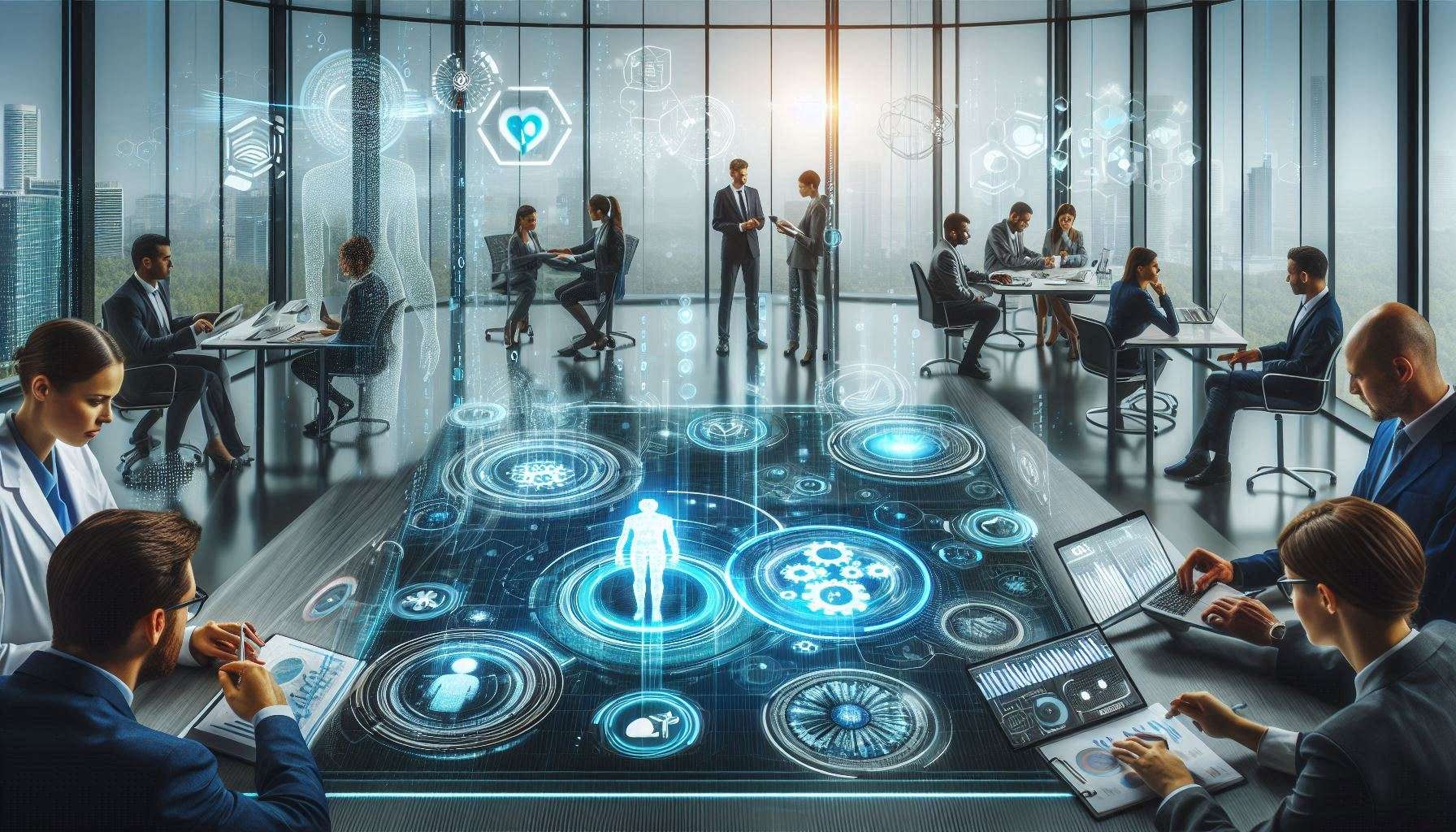The Rise of Computer Vision: How AI Enables Machines to See and Interpret the World
The growth of computer vision is transforming the way machines interact with the world, enabling them to see, understand, and respond to their environment. With the help of artificial intelligence (AI), computer vision is becoming increasingly sophisticated, allowing machines to perform tasks that were previously thought to be exclusive to humans. In this blog, we will explore the growth of computer vision and how AI is enabling machines to see and understand the world.
The integration of computer vision and AI has led to significant advancements in various fields, including robotics, healthcare, and transportation. For instance, self-driving cars rely on computer vision to navigate through roads and avoid obstacles, while medical diagnosis is being improved through the analysis of medical images. Moreover, computer vision is being used in surveillance systems to detect and prevent crimes, and in retail to enhance customer experience. As the technology continues to evolve, we can expect to see even more innovative applications of computer vision in the future.
The rapid growth of computer vision is revolutionizing how machines perceive and interact with the physical world. By combining advanced artificial intelligence (AI) algorithms with high-resolution image processing, computer vision allows machines to see, understand, and respond to visual data—just like humans. This breakthrough technology is driving innovation across industries, enabling automation, improving accuracy, and enhancing decision-making.
With the rise of AI-powered computer vision systems, machines can now perform complex tasks such as object recognition, facial detection, and real-time tracking. These tasks were once considered uniquely human, but thanks to machine learning and deep learning models, they are now being automated at scale.
In this blog, we explore how the advancement of computer vision technology is reshaping industries:
-
🚗 Autonomous vehicles use computer vision to detect obstacles, recognize traffic signs, and navigate roads safely.
-
🏥 In healthcare, AI-driven image analysis aids in early disease detection through tools like MRI and CT scan interpretation.
-
🛍️ The retail sector leverages visual recognition to monitor inventory, enhance customer experience, and streamline checkout processes.
-
🔐 Security and surveillance systems use computer vision for facial recognition and real-time threat detection to improve public safety.
-
🤖 Robotics and manufacturing benefit from precise visual inspection and quality control using vision-based systems.
The integration of AI and computer vision is not just a trend—it’s a foundational shift in technology. From smart cities and e-commerce to agriculture and education, the applications are vast and expanding rapidly.
As this transformative technology continues to evolve, businesses and developers alike must stay updated with the latest trends in computer vision to stay competitive. The future holds even more innovative AI applications that will further blur the line between human and machine vision.
What is Computer Vision? A Complete Guide to AI and Image Recognition
How Does Computer Vision Work?

Computer vision uses algorithms, deep learning models, and neural networks to identify objects, patterns, and actions in visual media. This technology involves three main steps:
- Image Acquisition – Capturing digital images or video using sensors or cameras.
- Image Processing – Pre-processing and transforming images for analysis using filters and pixel manipulation.
- Object Recognition – Identifying objects, faces, gestures, or text using trained machine learning models.
Deep learning, particularly convolutional neural networks (CNNs), plays a key role in modern computer vision applications.
Real-World Applications of Computer Vision
Computer vision is revolutionizing various industries through automation, real-time analysis, and improved accuracy. Here are some top applications:
- Self-driving cars – Use computer vision for object detection, lane tracking, and pedestrian recognition.
- Healthcare – Analyze X-rays, MRIs, and CT scans for disease diagnosis using image recognition.
- Retail – Power facial recognition, smart checkouts, and inventory management.
- Manufacturing – Conduct visual inspections and quality control in real-time.
- Security & Surveillance – Enhance facial recognition, behavior tracking, and anomaly detection.
Benefits of Computer Vision Technology
Embracing computer vision technology offers numerous advantages to businesses and consumers:
- Improves efficiency and speed of operations.
- Reduces human error in critical visual tasks.
- Enables automation of repetitive processes.
- Enhances customer experiences with personalized recommendations.
Challenges in Computer Vision
Despite its powerful capabilities, computer vision faces a few challenges:
- Variations in lighting, angle, and background can affect accuracy.
- Large labeled datasets are needed for effective training.
- Privacy and ethical concerns in surveillance and data usage.
Future of Computer Vision in AI
The future of computer vision looks promising, with advancements in edge computing, 3D vision, and augmented reality (AR). Industries are rapidly integrating AI-powered computer vision for smarter automation, better diagnostics, and more immersive user experiences.
As computing power and algorithms evolve, computer vision will become even more integral to innovations in robotics, metaverse, and smart cities.
History of Computer Vision
The history of computer vision traces back to the early days of artificial intelligence (AI), when researchers first explored how machines could process and interpret visual information. Over the decades, computer vision has evolved from simple image processing experiments to advanced deep learning models capable of facial recognition, object detection, and autonomous navigation.
The history of computer vision dates back to the 1960s, when the first computer vision systems were developed. These early systems were based on simple algorithms that could detect edges and lines in images. However, they were limited in their ability to recognize complex objects and scenes. In the 1980s, the development of machine learning algorithms, such as decision trees and neural networks, improved the performance of computer vision systems. The 1990s saw the introduction of more advanced algorithms, such as support vector machines (SVMs) and k-means clustering.
The 21st century has seen significant advancements in computer vision, driven by the development of deep learning algorithms. The introduction of AlexNet in 2012, a deep neural network that won the ImageNet Large Scale Visual Recognition Challenge (ILSVRC), marked a major milestone in the development of computer vision. Since then, numerous deep learning algorithms have been developed, including ResNet, Inception, and DenseNet. These algorithms have achieved state-of-the-art performance in various computer vision tasks, including image recognition, object detection, and segmentation.
The applications of computer vision are diverse and widespread. In healthcare, computer vision is being used to analyze medical images, such as X-rays and MRI scans, to diagnose diseases. In self-driving cars, computer vision is used to detect and respond to obstacles, such as pedestrians and other vehicles. In retail, computer vision is being used to enhance customer experience, through the use of virtual mirrors and personalized product recommendations. As the technology continues to evolve, we can expect to see even more innovative applications of computer vision in the future.
Origins of Computer Vision (1950s – 1970s)
The journey began in the 1950s and 1960s, when early AI researchers attempted to simulate human vision using computers. In 1966, MIT launched the “Summer Vision Project,” which aimed to get a computer to recognize objects in a scene—a task now known to be vastly complex.
By the 1970s, foundational work on edge detection and image segmentation laid the groundwork for future breakthroughs. The introduction of early algorithms like the Sobel filter helped identify object boundaries in static images.
Growth of Machine Learning and Image Processing (1980s – 1990s)
During the 1980s and 1990s, the field of computer vision expanded significantly. Researchers began using statistical methods and pattern recognition to improve image classification accuracy. Technologies like optical character recognition (OCR) and facial detection began emerging in commercial applications.
Computer vision was increasingly applied in areas like manufacturing, military surveillance, and robotics, setting the stage for the integration of machine learning algorithms.
Rise of Artificial Intelligence and Deep Learning (2000s – 2010s)
The 2000s marked a turning point in the evolution of computer vision. With greater computing power and access to large datasets, AI and deep learning revolutionized the field. The breakthrough came in 2012, when a deep neural network called AlexNet dramatically improved object recognition performance in the ImageNet competition.
This milestone triggered widespread adoption of convolutional neural networks (CNNs) for tasks like image classification, object detection, semantic segmentation, and more.
Modern Applications of Computer Vision (2020s and Beyond)
Today, computer vision technology powers innovations across various industries. From healthcare and automotive to retail and agriculture, computer vision is used for facial recognition, disease diagnosis, quality inspection, and autonomous driving.
- Self-driving cars use real-time object detection and lane tracking.
- Healthcare systems rely on AI image analysis for medical diagnostics.
- Retail stores implement visual analytics for customer behavior and inventory management.
Advancements in deep learning, edge AI, and 3D vision continue to push the boundaries of what computer vision can achieve.
Key Milestones in the History of Computer Vision
- 1966 – MIT Summer Vision Project initiated.
- 1980s – Introduction of edge detection algorithms.
- 1990s – Emergence of OCR and facial detection technologies.
- 2012 – AlexNet wins ImageNet, revolutionizing deep learning in vision.
- 2020s – Widespread deployment of computer vision in real-world applications.
Why Understanding the History of Computer Vision Matters
Understanding the history of computer vision is vital for anyone interested in artificial intelligence and machine learning. It provides context for current technologies and helps guide future innovations in areas such as AI vision systems, robotics, and augmented reality (AR).
By studying how computer vision evolved, developers and businesses can better appreciate its capabilities and implement more intelligent, scalable solutions.
Top Applications of Computer Vision Across Industries
Computer vision has numerous applications across various industries. In healthcare, computer vision is being used to analyze medical images, such as X-rays and MRI scans, to diagnose diseases. For example, a computer vision system can be trained to detect tumors in medical images, allowing for early diagnosis and treatment. In self-driving cars, computer vision is used to detect and respond to obstacles, such as pedestrians and other vehicles. Computer vision is also being used in surveillance systems to detect and prevent crimes, such as theft and vandalism.
In retail, computer vision is being used to enhance customer experience, through the use of virtual mirrors and personalized product recommendations. For example, a virtual mirror can be used to
1. Computer Vision in Healthcare
One of the most impactful use cases of computer vision is in the healthcare industry. AI-powered medical imaging systems can detect tumors, identify abnormalities, and assist in diagnostics with high precision. Applications include:
- MRI and CT scan analysis
- Detection of skin cancer through image classification
- Tracking patient movements in rehabilitation centers
These technologies help reduce human error and enable early diagnosis, saving lives and healthcare costs.
2. Computer Vision in Automotive Industry
The automotive sector heavily utilizes computer vision technology in autonomous driving and advanced driver-assistance systems (ADAS). Vehicles use cameras and sensors to:
- Detect pedestrians, other vehicles, and obstacles
- Recognize traffic signs and signals
- Enable lane-keeping and adaptive cruise control
This enhances road safety and moves us closer to fully autonomous vehicles.
3. Computer Vision in Agriculture
Computer vision applications in agriculture help farmers monitor crop health and increase yields. With the help of drones and image analytics, farmers can:
- Detect pest infestations and diseases early
- Assess soil conditions and plant growth
- Automate harvesting and sorting processes
This precision agriculture leads to better resource management and improved productivity.
4. Computer Vision in Retail
Retailers are leveraging AI and computer vision to enhance the customer experience and optimize operations. Key applications include:
- Customer behavior analytics through in-store cameras
- Automated checkout systems (like Amazon Go)
- Inventory tracking and shelf management
These innovations reduce operational costs and improve service quality.
5. Computer Vision in Security & Surveillance
Security systems use computer vision for surveillance to detect unusual activity and identify individuals. Popular applications include:
- Facial recognition for access control
- Real-time threat detection
- License plate recognition in parking systems
This technology enhances security in public places, airports, and corporate environments.
6. Computer Vision in Manufacturing
In the manufacturing industry, vision-based quality control systems ensure product consistency and reduce defects. Examples include:
- Visual inspection for flaws in production lines
- Robot guidance for assembly processes
- Packaging verification and sorting
This leads to higher efficiency, lower waste, and improved product quality.
7. Computer Vision in E-Commerce
AI-powered visual search is transforming online shopping experiences. Computer vision allows users to search for products by uploading images, leading to more accurate results. Other uses include:
- Virtual try-on for fashion and eyewear
- Image-based product recommendations
This boosts user engagement and increases conversions.
Conclusion
From healthcare to e-commerce, the applications of computer vision are redefining how industries operate. By harnessing AI and deep learning, computer vision is enabling smarter decisions, improving efficiency, and enhancing user experiences. As the technology continues to evolve, its adoption is set to grow even more, offering limitless possibilities across sectors.

